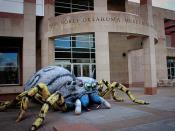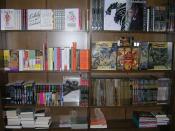David F. Noble's book The Religion of Technlogy: The Divinity of Man and the Spirit of Invention explores and presents the historical development of religion of technology in the west for the past thousand years or so. David F. Noble claims that we seek these powers to regain the perfection we lost when man was banished from the Garden of Eden and to bring ourselves closer to God. Noble describes how technological advancement accelerated at the very point when it was invested with spiritual significance. In this book, he examines scientists, explorers, engineers, and many others who made an impact in technology through what he describes as an "other-worldly" inspiration for doing so.
"This, then, is what the arts are concerned with," Hugh of St. Victor wrote, "this is what they intend, namely, to restore within us divine likeness (Noble 29)." Noble explains that technology has a sense of divine likeness , especially from early on and through the arts.
"The arts, the philosopher Erigena wrote, are "man's links with the Divine, their cultivation a means to salvation." (Noble 25) Noble states that this conceptualization "signaled a turning point in the ideological history of technology (Noble 25)". Adam and Eve was a particularly interesting situation where man's use of technology transformed biblical history, as Noble explained. Biblical texts, especially from Genesis, were typically quoted in support of improvement and advancement in the arts. Because of Adam's hard labor and work, he was given complete control over his environment. "The American was the "eternal Adam", who would create "an earthly millennium of perfect harmony in the New World of Eden (Noble 115)".
The interaction between technology and religion is shown from other areas such as sociologists and through the Christian millennium. During the first Christian millennium, technology...


